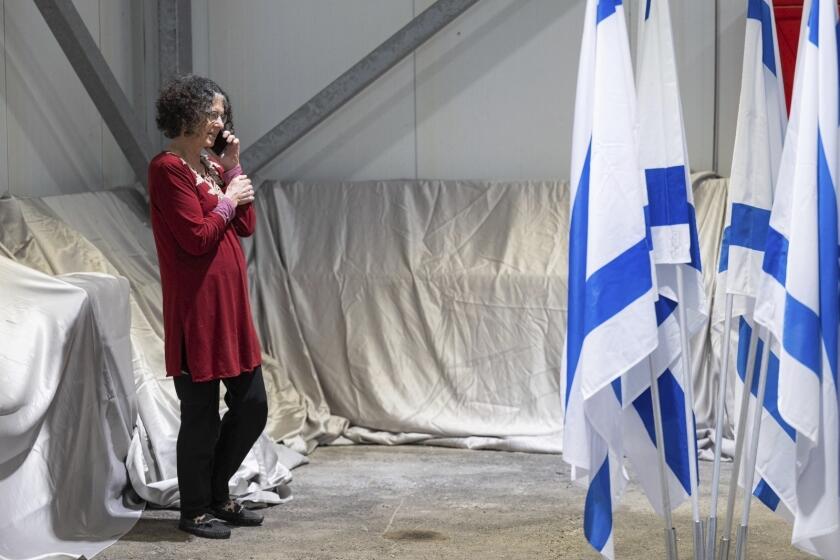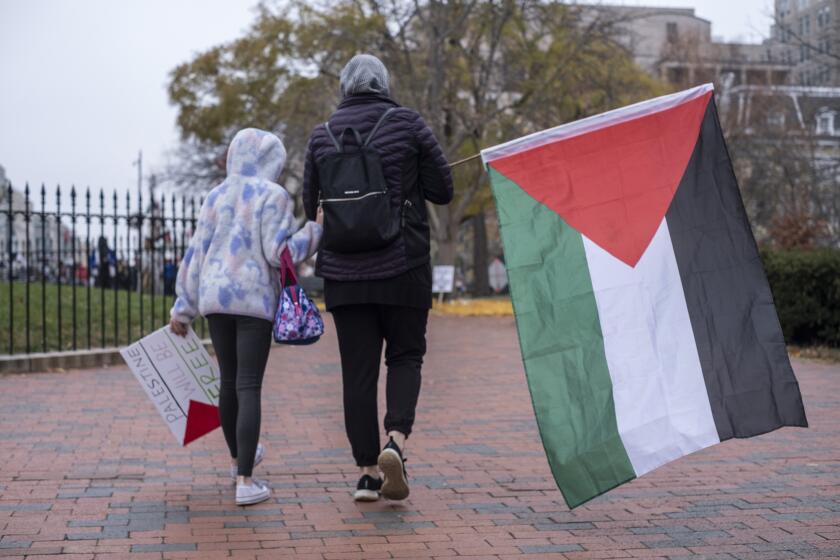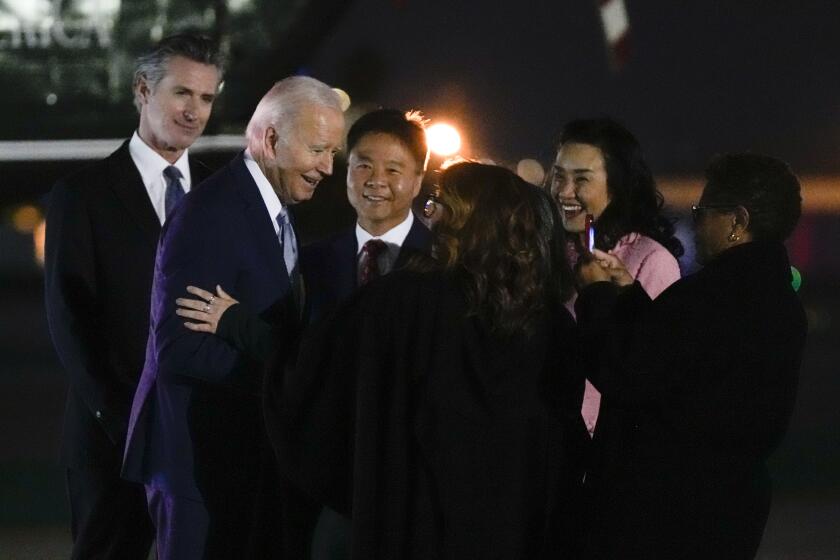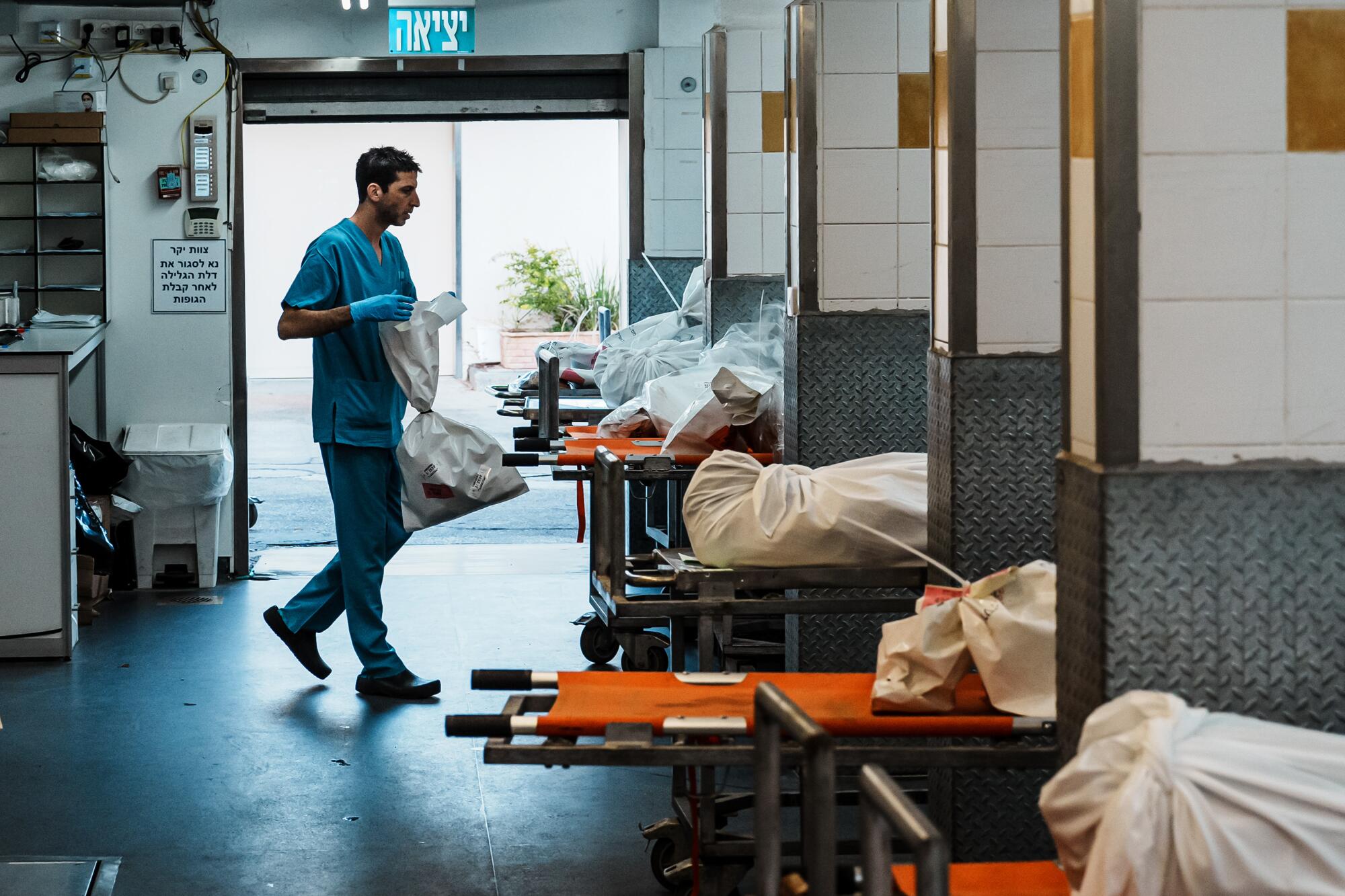
A bone. A tooth. A sliver of skull. They came in bags, endless bags, mixed with ash, coins, bullets and shrapnel. Like imperfect tapestries, some held the remains of different people. The bags were numbered, cataloged and scanned. DNA was extracted. The science was precise, but it was hard to know what happened, how a person was killed.
One bag, which held clues to the final seconds of life, unnerved and intrigued Dr. Chen Kugel, head of the National Center of Forensic Medicine here. Since Oct. 7, his staff has been working on identifying the remains of some of the 1,200 people killed by Hamas militants. He has been trying to understand not only the causes of death but also the underlying hate. Both, he said, often lie beyond one’s imagination.
He pointed to a computer screen.
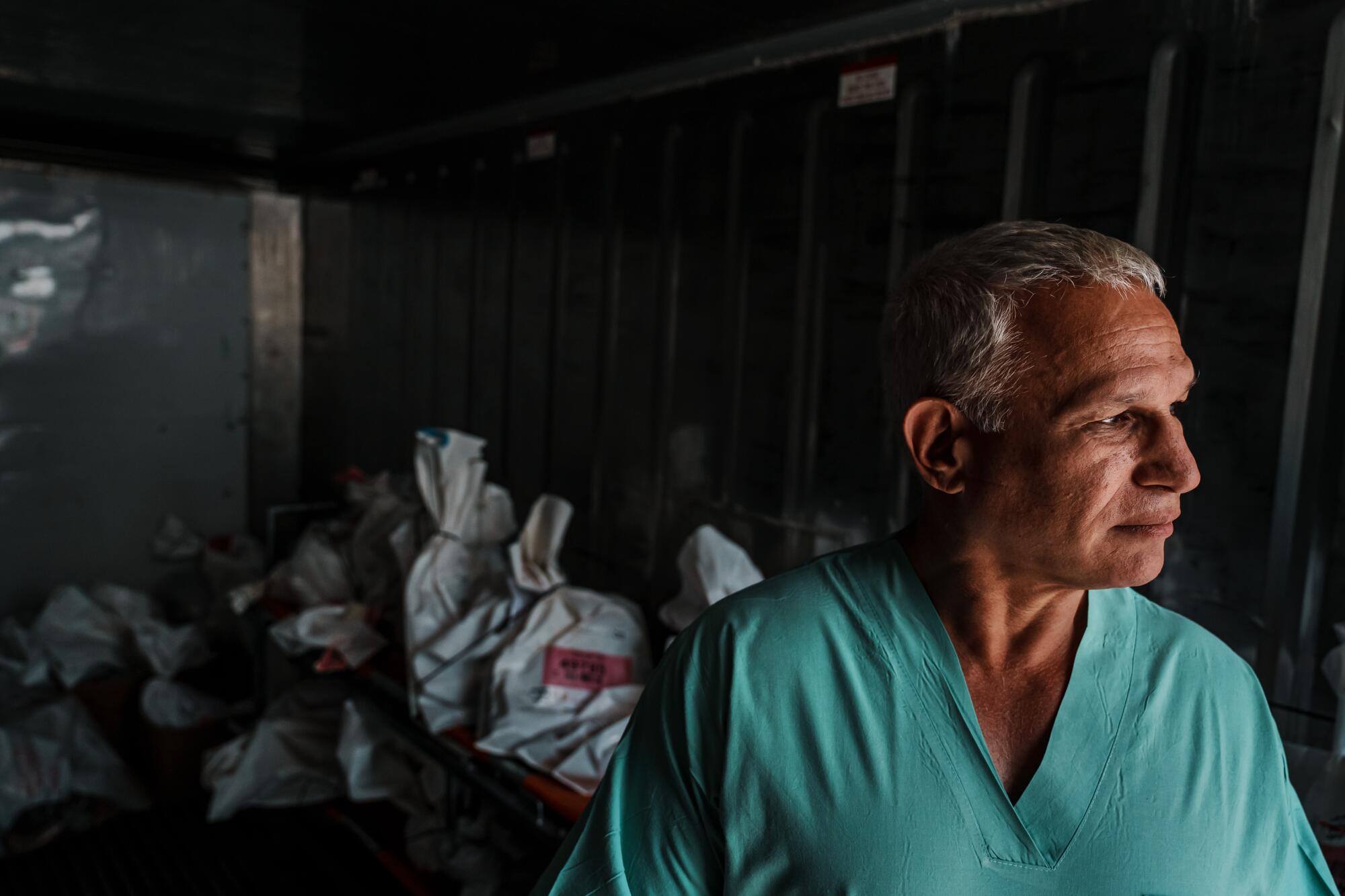
“This is a piece of something that looks like charcoal,” he said. “But then you see it through a CT scan, and you see two spines, one of an adult and one of someone younger, maybe 10 or 12 years old. And two sets of ribs. You can see they are roped around with this metal wire. These were people who were hugging one another and burned while they were tied together. It might be a parent and a child.”
So many bags — 748 at last count — have passed through the center. In the immediate days after the killings, the bags were bigger; the remains, more definable. But since then, like a stain that fades but never goes away, the bags, and what’s inside them, have grown smaller in the realm where science and loss intersect.
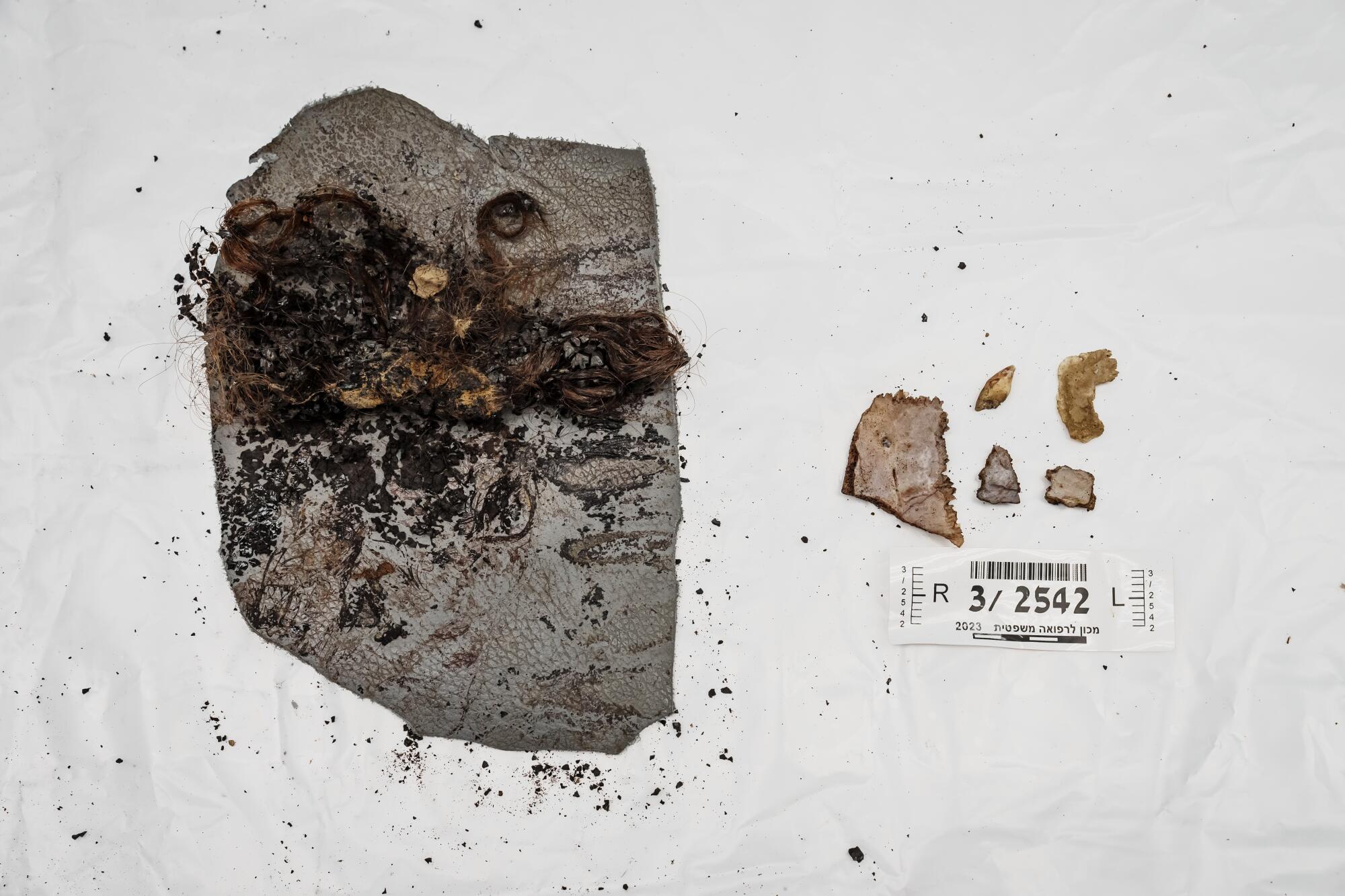
The remains came from towns and kibbutzim near the Gaza border including Sderot, Kfar Aza and Beeri — names now recited like whispered hymns — and the music festival in the Negev desert where 260 died. They were collected by Zaka, a team of mostly Orthodox volunteers, who scoured the landscape so that every possible part of a person could be buried according to religious law.
A blackened tibia came in one bag.
“It’s not human,” said Dr. Alon Krispin, head of radiology at the center. “It’s a dog.”
Most of the bodies were identified through DNA, and the staff’s mission now, said Kugel, a retired commander in the army’s medical identification unit, “is reassembling and reconnecting pieces.” He was shaken by the fierceness and cruelty that led to the bodies and CT scans he had seen: “This man has a shattered pelvis,” he said. “He was shot, stabbed, burned and run over.” He paused. “This is a 12-year-old girl. A decapitation. I don’t know if it was done before death or after death. I think after, but I cannot tell.”
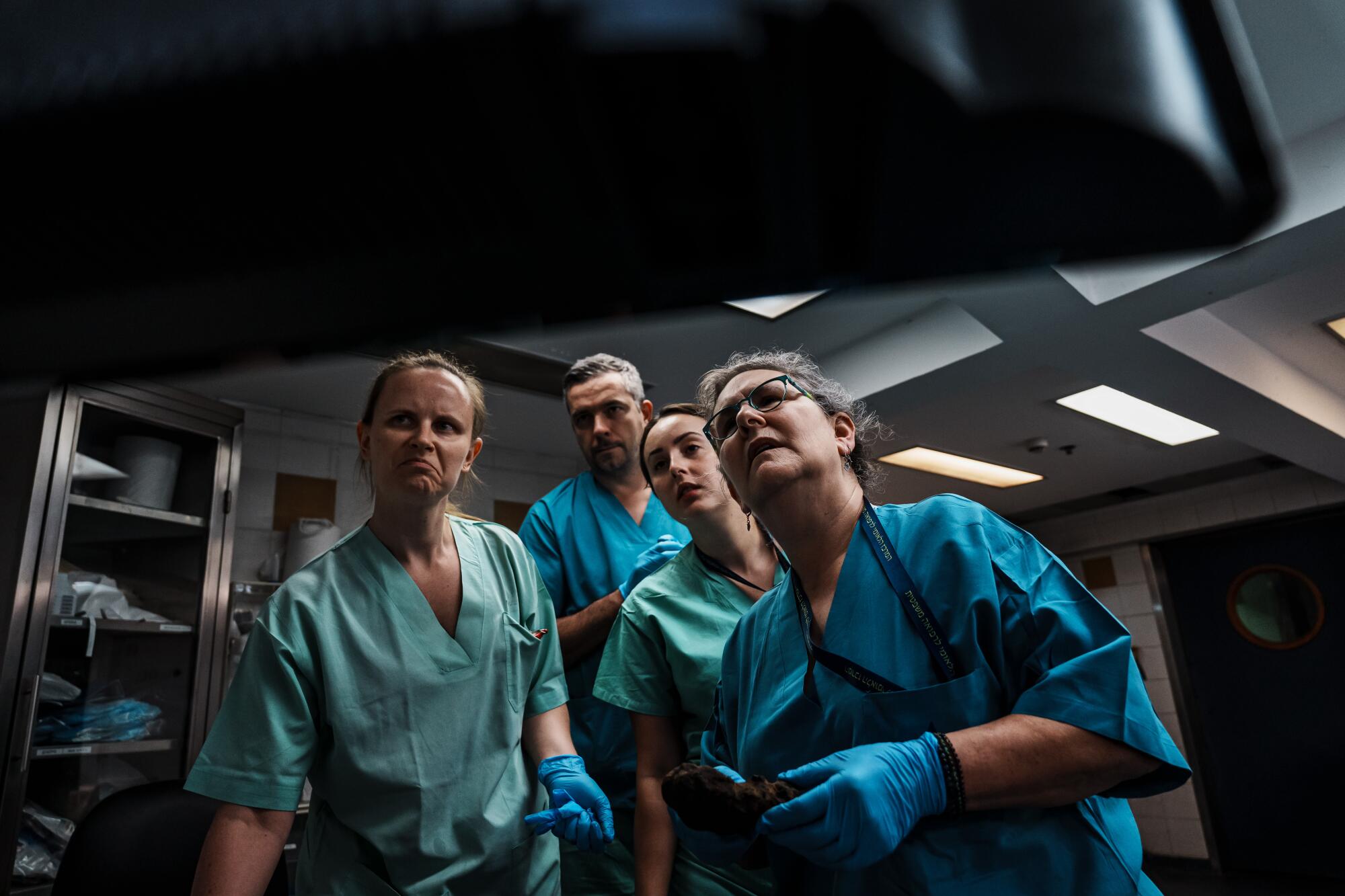

Kugel, 61, spoke of death as one might speak of equations, allowing him a certain detachment — at least on most days. He is a fit man with self-deprecating charm. His eyes are bright and deep-set and his voice has a resonance that draws you close. He’s a classically trained pianist who played for years in a jazz band. But he hasn’t sat at the piano — he likes the arrangements of George Shearing — in more than a month. He noted he is sometimes overcome by unexpected kindnesses.
“One Friday evening volunteers brought food for Shabbat,” he said. “I had to say thank you on behalf of the workers here. I started to cry because it reminded me of humanity, and it reconnected me with the feeling that we are all people and to remember the ones who were murdered for nothing and remember the good people that care for you and think of you.”
Doors slid open and closed at the center, a ragged pale-colored building that sits behind a gray gate, testament to an underfunded and understaffed state agency. Odors of chemicals and death threaded cool air. Footsteps were quick; hands darted in and out of surgical gloves. Vans arrived with new bags. They were loaded onto stretchers, their contents scanned before they were wheeled into a holding area and taken to examining rooms where they lay beneath white lights, awaiting scalpels, tweezers, saws and instruments that could narrow the mystery to someone’s identity.
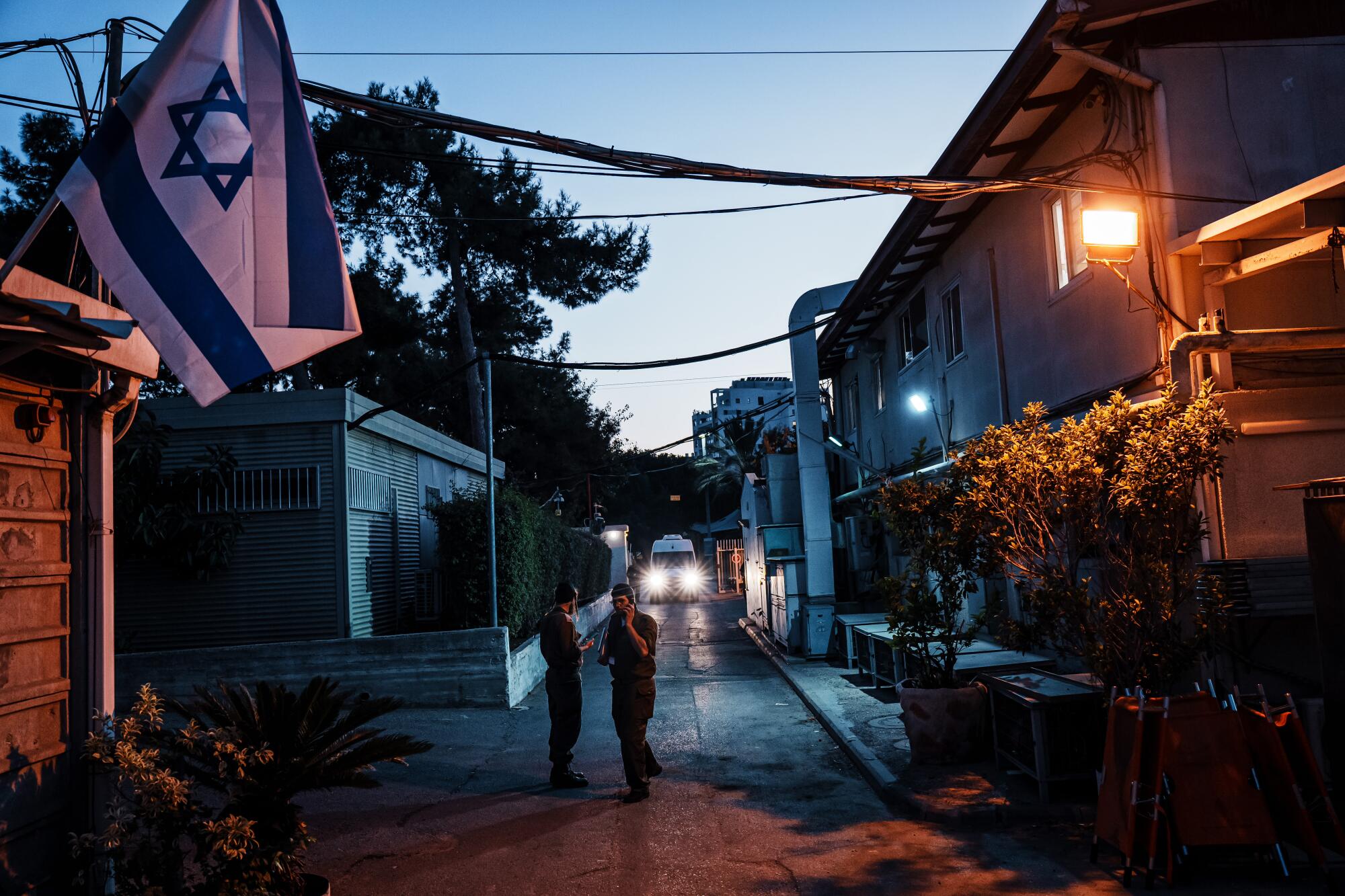
The shape of a sinus, a filling, an operation from years ago. They make the map of the body, like lines between constellations in the sky. Michal Peer, a forensic anthropologist who grew up in Colorado, where she worked as an autopsy intern before moving to Israel, stood over a table examining bone fragments, ash, coins, pieces of cellphones. “A tooth,” said one of her staff, pointing to a scattering of charred bits on a silver tray.
Peer helps identify bodies whose DNA has been burned away by heat that surpassed 700 degrees Celsius. “Almost everything I’m getting,” she said, is burned. “High temperatures. A long time.”
She turned to a piece of blackened soft tissue that had hardened over the weeks. She dug for the bone inside.
Hamas militants swept out of the Gaza Strip on the morning of Oct. 7 during the Jewish holiday of Simchat Torah. They fired rockets into towns and pushed east, attacking villages and military installations. They shot people at intersections and bus stops and raided homes where families tried to hide behind closed doors. People fled from house to house as the militants advanced. Many were shot multiple times and many were set alight. Bodies were strewn across a wide terrain. About 240 Israeli hostages were taken by militants back to Gaza.
Kugel was home that Saturday and received a call “about a major event in the south. I didn’t know the magnitude. I thought maybe 100 or 150.” The deaths multiplied quickly, and the center was too small to handle the tide of victims. The most bodies Kugel had had to deal with at the center from a single incident was after a stampede that killed at least 45 at an ultra-Orthodox religious celebration in 2021 at Mt. Meron.
The Israel Defense Forces at the Shura army base in central Israel took in the bodies from the Hamas attack. Identification began, using garments, jewelry, teeth, medical records and other items. To speed up the process and preserve the evidence, fingerprints and DNA samples were collected at Shura. Anyone not immediately identified was sent to Kugel’s center.
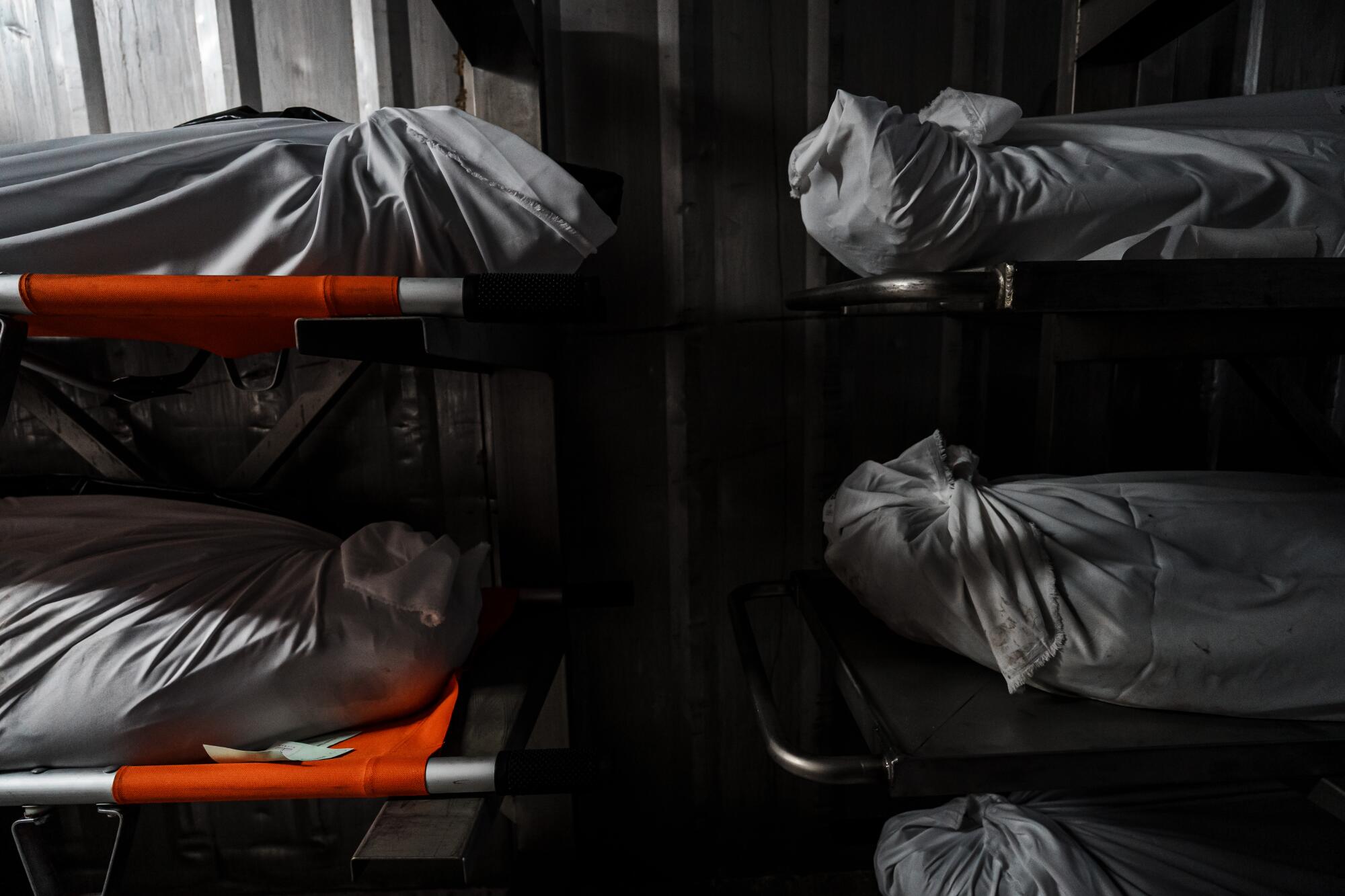
“Shura was a big place with many containers full of bodies,” said Kugel. “It looked like a port.”
The attack came at a divisive time in Israel. Protests against the radical right-wing government of Prime Minister Benjamin Netanyahu had reverberated for months. The nation was restless, angry and off balance. Kugel explained such politics with a joke, saying that Israel is not a country surrounded by enemies but rather enemies surrounded by a country. No one sensed — and Israel’s revered intelligence agencies missed — what Hamas was planning and how it would move like lightning and change a nation’s sense of itself.
“Maybe,” said Kugel, who, like many Israelis, wants the world to see in grisly detail the damage done, “Hamas wanted to make a post-traumatic stress syndrome for this country. Never have so many Israelis died in one day. They wanted to make us afraid, to feel insecure.
“But what we saw,” he continued, “was a country reunited. We understood who the real enemy was.”
The exigencies of war are many and terrifying, leaving suffering on all sides. As the body bags arrived at the center, much of the international community was condemning Israel’s relentless bombing in Gaza. More than 11,200 Palestinians, most of them women and children, had been killed, according to the Hamas-run Health Ministry. Kugel thought about this, the innocent and the perpetrators, which, depending on the side you’re on, was the story of this bitter and un-reconciled land. But what scared him the most, he said, was how visceral the Oct. 7 attack was, like a fury in the desert.
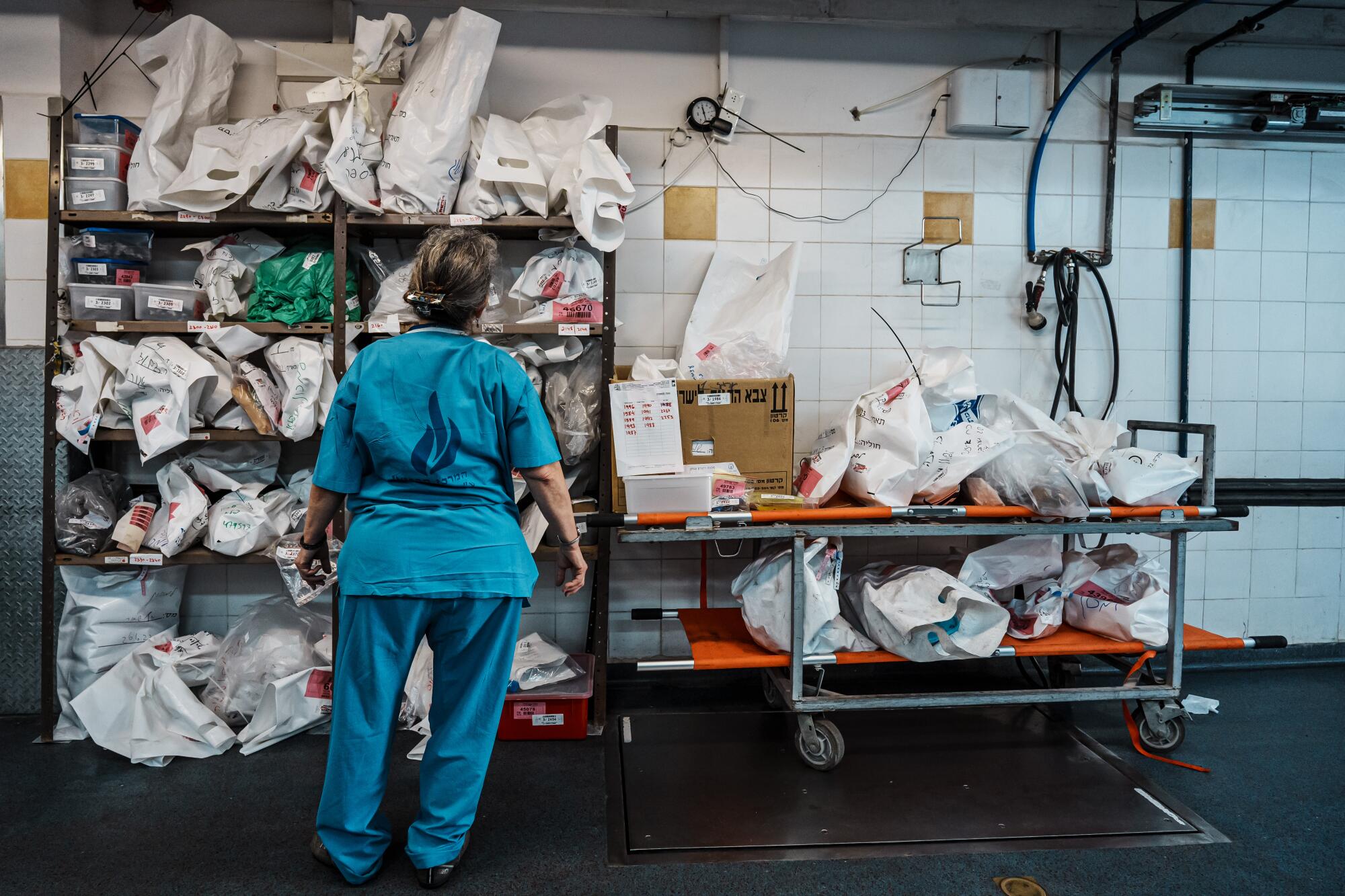
“Perhaps you had the belief that one day you could make a compromise for peace,” he said. “But when you see this you understand it is not the leadership. It is not politics. It is real hatred. The [Palestinians] hate us.” The irony, he added, is that “the kibbutzim near Gaza were very left-wing and very pro-peace.”
It will take a generation, he said, to change such searing hate. But it has been a number of generations, and Palestinians are still without a promised homeland and Israelis are well-armed yet less safe in a land of high walls and fences.
“We don’t bomb Gaza to teach them a lesson,” Kugel said. “We do it because we learned our lesson.
“We cannot survive like this. Everyone felt the threat to their existence.”
Forty or so migrant workers from Asia were victims, he said, including a man found with Sri Lankan money in his pockets and a Thai laborer nearly beheaded with a garden hoe. “They were cuffed and shot and I said, ‘For God’s sake, how are they related to these things? Why be so cruel to them? They came here to make money for their families. Maybe you hate Jews, but why do you hate them?’ ”
Another van carrying bags arrived in the late afternoon. The Zaka men and the soldiers were tired, but they kept to the rhythm and the hours — stretchers rolled and numbers were recorded. Nir Blatman, who has worked at the center since 2007, walked past the van to a shipping container on the rear grounds of the facility. He opened it. A stench curled out like a wave.
“I’ve seen all kinds of death but not in this amount,” said Blatman, who at day’s end would go home and walk his dog and not think so much about his work. “I tried not to cry. I’m one of the older ones here. I needed to be strong. You must disconnect and work like a robot. Instead of being sad, I became angry. The people who were killed were scared, and they knew they were going to die and that no one was coming to help.”
He looked in and pointed to four numbers on a sheet of paper. Hamas militants. They will be buried, he said, in a place where enemies go.
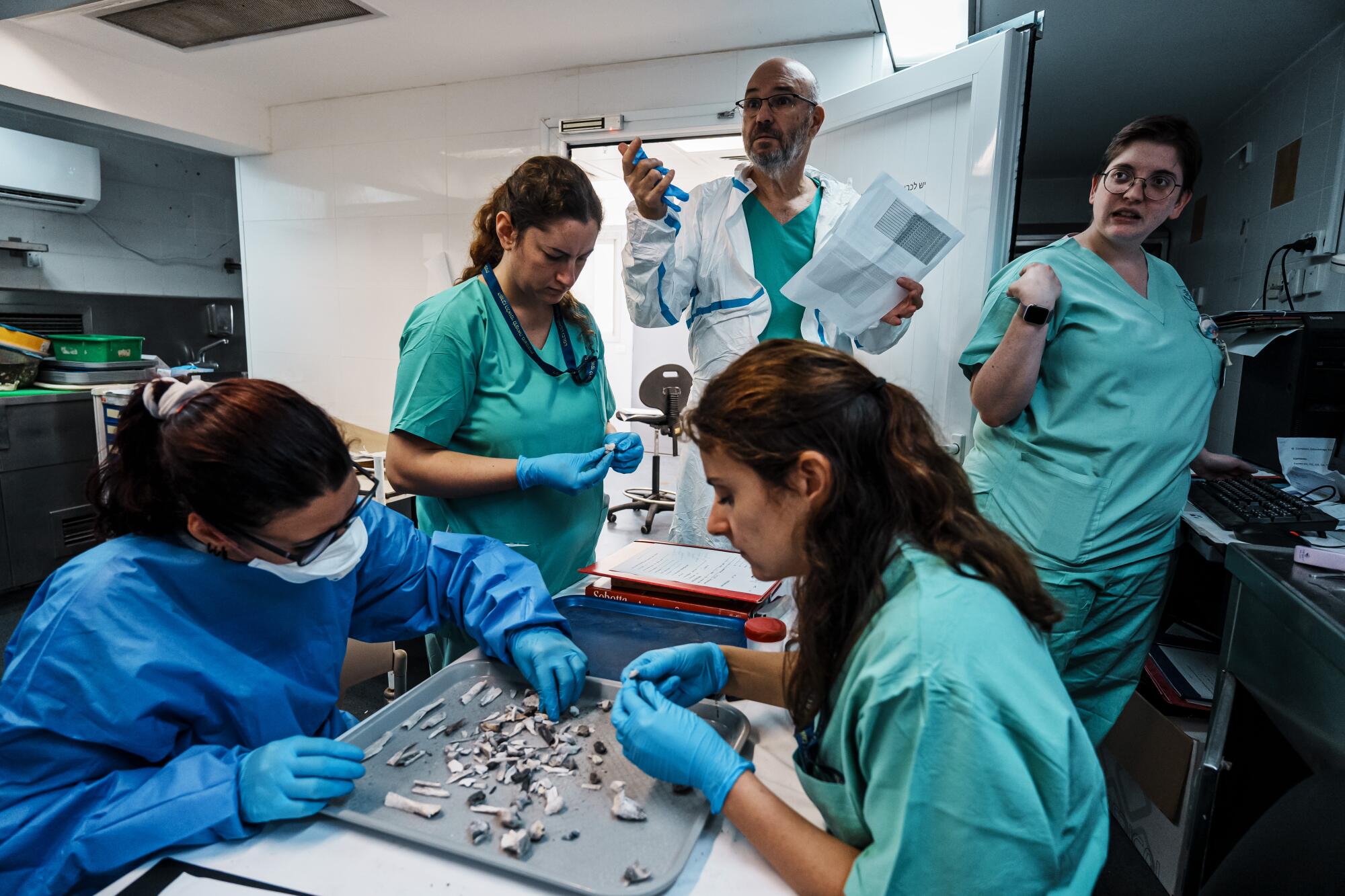
Doors to examining rooms opened and closed. As he stood over a blackened foot — it was all that was left of a body — Dr. Konstantin Zaitsev struggled to remove a coil of shrapnel. He yanked and tugged it free. It shone silver. Another pathologist held up the foot; like a ray of light through a keyhole, the shrapnel had passed all the way through. The scrap of a garment next to the foot offered a clue.
“It’s not an Israeli uniform,” Zaitsev said. “It’s probably Hamas.”
Down the hall, a team waited for a van to deliver a body bag that was expected to contain the remains of a child. Investigators had earlier found a fragment of one of her bones about 100 yards from a house that blew up. A DNA test revealed the girl’s identity, but the fragment was tiny enough that the child could be alive (they didn’t believe she was) and missing, or one of the 240 people kidnapped by Hamas.
“She was only 12 years old,” said a doctor. “We want to do all we can to finish.”
He paused.
It would never be finished. Parts would always be missing.
The van arrived. It was not carrying the bag. They would have to wait until tomorrow.
Patience here was demanded, but it was a hard thing to know. The hours and vials, so many things sealed, opened and tested. The way a day disappeared. The staff consoled one another with smiles, hands across shoulders, shared whispers. Earlier that morning, beneath the tall pines in the courtyard, Kugel thanked them for their work and told them that their lives would be divided into “before and after” Oct. 7. They sang the national anthem and went back to their tasks.
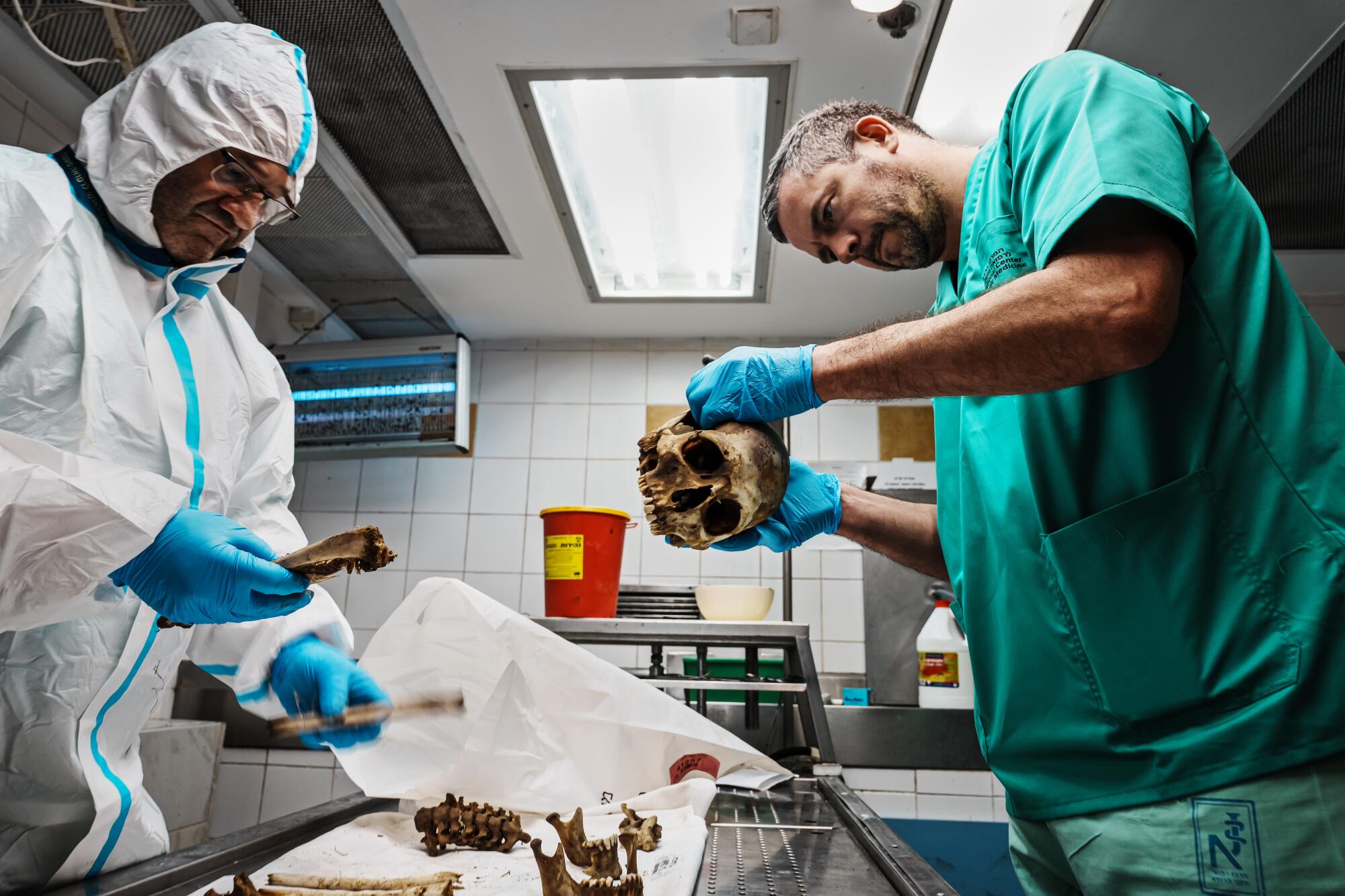
“We had one person where we had only four pieces of his skull. Very small pieces,” said Kugel, holding up the blue tip of a pen. “They were from different parts of the skull so we concluded that he’s dead. His head was probably shattered with a high-velocity bullet. This is what’s in the grave. The only thing we found of him.”
He said he didn’t want to be a man so detached that he didn’t feel. He didn’t think he was; a man’s burden, he said, makes him stronger.
“I don’t want to brag,” he said. “But nowhere else in the world were so many people identified in such a short time. Even after 9/11 it took longer. It’s easier here because everyone must serve in the army. Their blood samples and fingerprints are on file.”
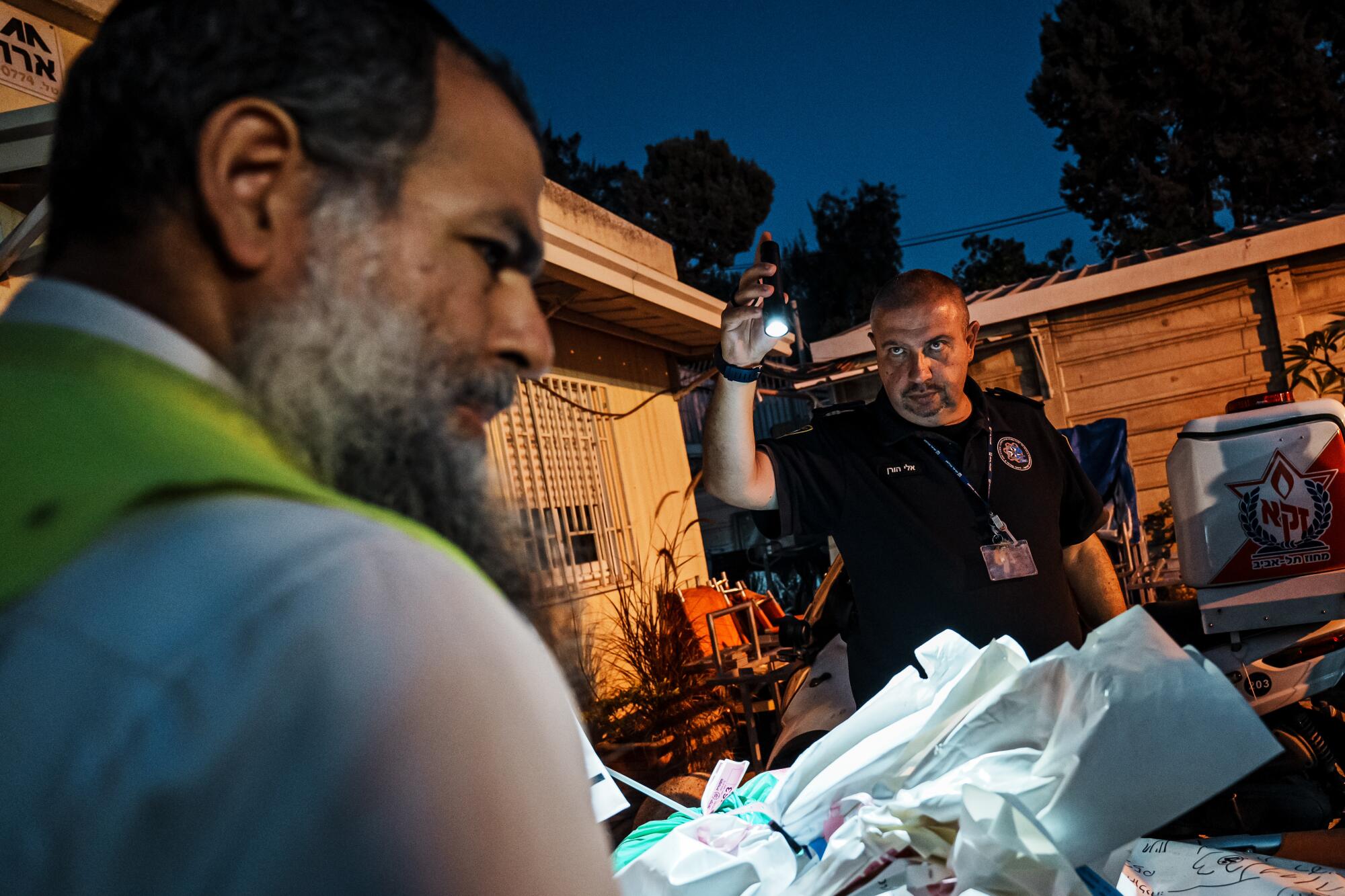
It grew dark. Some of the staff changed out of their scrubs and into street clothes. A body was slid into a cooler. A pathologist rode her bike toward the gate. A security guard watched her glide beneath the trees. A few workers sat in the stillness of the courtyard. Soft music played. The vans were done coming for the night. But there would be more bags tomorrow.
Start your day right
Sign up for Essential California for news, features and recommendations from the L.A. Times and beyond in your inbox six days a week.
You may occasionally receive promotional content from the Los Angeles Times.


